The control of biological synthetic technology with the help of yeast cells?
Yeast cells versus blood cells - Comparison of changes in blood with changes in yeast cells
The control of biological synthetic technology with the help of yeast cells
We need precise gene expression control in bioengineered systems to regulate enzyme expression levels in engineering metabolic pathways and building gene circuits to control cell behavior. This is regulated by so-called promoters. They play a key role in the regulation of protein expression, a key task for biological systems.
And what is used for this? The yeast Saccharomyces cerevisiae. Baker's yeast.
Let's compare changes in the blood with changes in yeast cells
Normally, these cell types are fundamentally different from each other. Or so one would think...
The recent changes in the blood count show infected erythrocytes. At the same time, I came across several articles about altered yeast cultures in connection with thickened walls.
Let's compare what we find.
The following is baker's yeast from 2020. During the border closures in 2019 and 2020, no yeast was available for some time. Suddenly, some large packs appeared, which we then bought.
The following photos are of this yeast. At first I only mixed it with normal well water. Not with sugar. I wanted to test its current appearance without triggering any processes:
The thickened cell walls, which are thicker in yeasts than in erythrocytes, are striking.
The inner workings of the cells are now also very similar to what we can find in our blood cells:
Round cells, with thickened walls and the same internal structures as can be seen in yeast cells.
Next, I added sugar to the yeast to see what changed. A noticeable change occurred very quickly, as you can see here:
We all know that yeast cells go into a fermentation process. But we now also know this type of flow form from the blood count. At the edges, the blood flows outwards in exactly these forms.
This phenomenon is not yet old, but it occurs at a similar speed, even if not in the entire preparation, as with yeast cells. But the similarity cannot be overlooked.
What does that mean? Do similar fermentation processes take place in our blood plasma? What changes the flow properties of the blood to such an extent that it even takes on the same shape as the yeast cells?
Let's take another look at how blood cells that have been alive on the slide for several weeks look in terms of the wall thickness, color and shape of these cells:
4 week old red blood cells: - which can be clearly assumed to be synthetic cells.
Fresh yeast cells, simply mixed with water.
The following image is from a recent blood sample in which a massive infestation of the individual erythrocytes can be seen and the cells are beginning to form reticular structures:
In turn, the fresh yeast cells in the water:
These are yeast cells with an artificial chromosome:
This cell image comes from an article on the incorporation of artificial chromosomes into brewer's yeast:
Normal yeast cells with the artificial chromosome number 3 were not only viable, but they behaved in practically the same way as their natural sister cells. This new yeast is an important step towards cells that can produce molecules for medicine or environmental protection at the touch of a button. Until now, such substances have been produced almost exclusively using genetically modified bacteria. However, yeast cells are eukaryotes and have certain advantages over other microorganisms.
Link: https://www.nzz.ch/panorama/hefe-mit-kuenstlichem-chromosom-ld.647568
The following article goes into much more detail on the above-mentioned necessity of controlling a synthetic technique in a biological organism, which is undertaken with the help of promoters.
Title: Model-controlled generation of artificial yeast promoters
Given this background and the striking similarities between the blood cells and yeast cells that occur, everyone can form their own picture of what is currently happening in the blood.
A video of “normal” baker's yeast:
Here are some more pictures of the yeast cells that were bustling around under my microscope today:
This cell type appears again and again. Once again it can be found in well water. Similar to what I reported in my post about famotidine.
Famotidine - versus Ivermectin
Not that this is anything new... Everyone knows Ivermectin. In contrast, famotidine is relatively unknown.. According to the findings of Dr. Klinghardt and our own experience, medication with famotidine was significantly more effective than Ivermectin. Within a few hours, a daily dosage of 80mg was able to stop the so-called Covid infection as soon as i…
Here also a fiber structure that probably comes from the well water. Just as our blood patterns change in phases of exertion, a similar process can also be seen in water. In other words, the water quality changes almost weekly.
The yeast cells photographed with a different camera:
And thanks again to everyone who supports me!
You can support me via the Ko-Fi button, or through a paid subscription. Either here on Substack or on my website.
With a paid subscription you get access to my Future Targets, Extra Targets and the first blueprint for the LaserCube via my website.

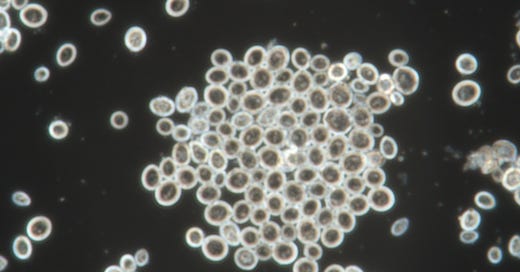


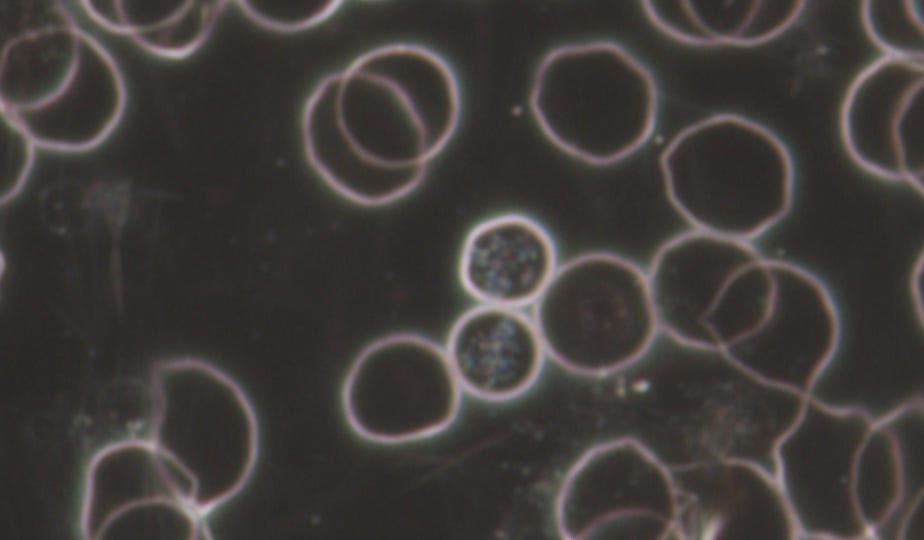

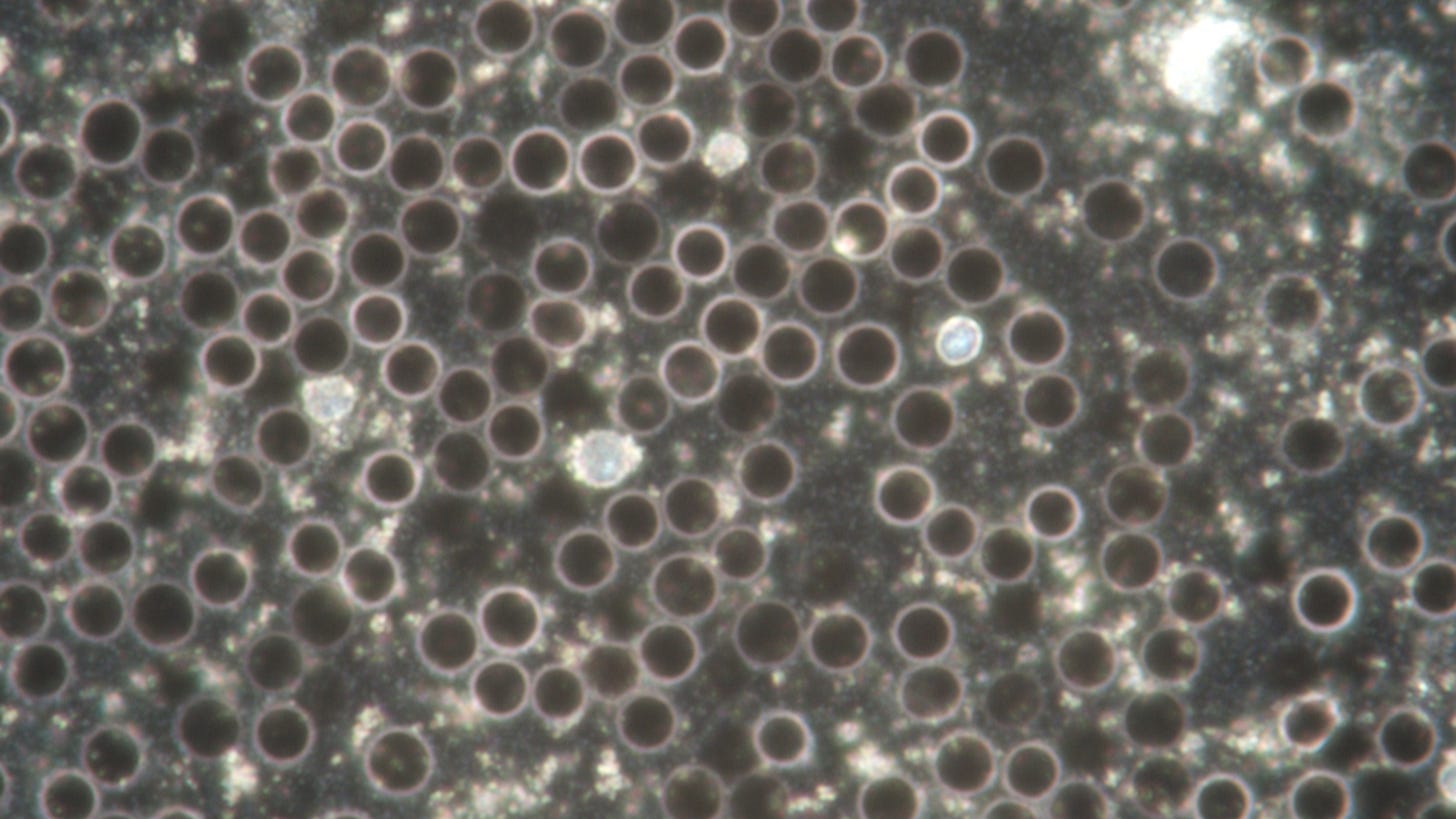

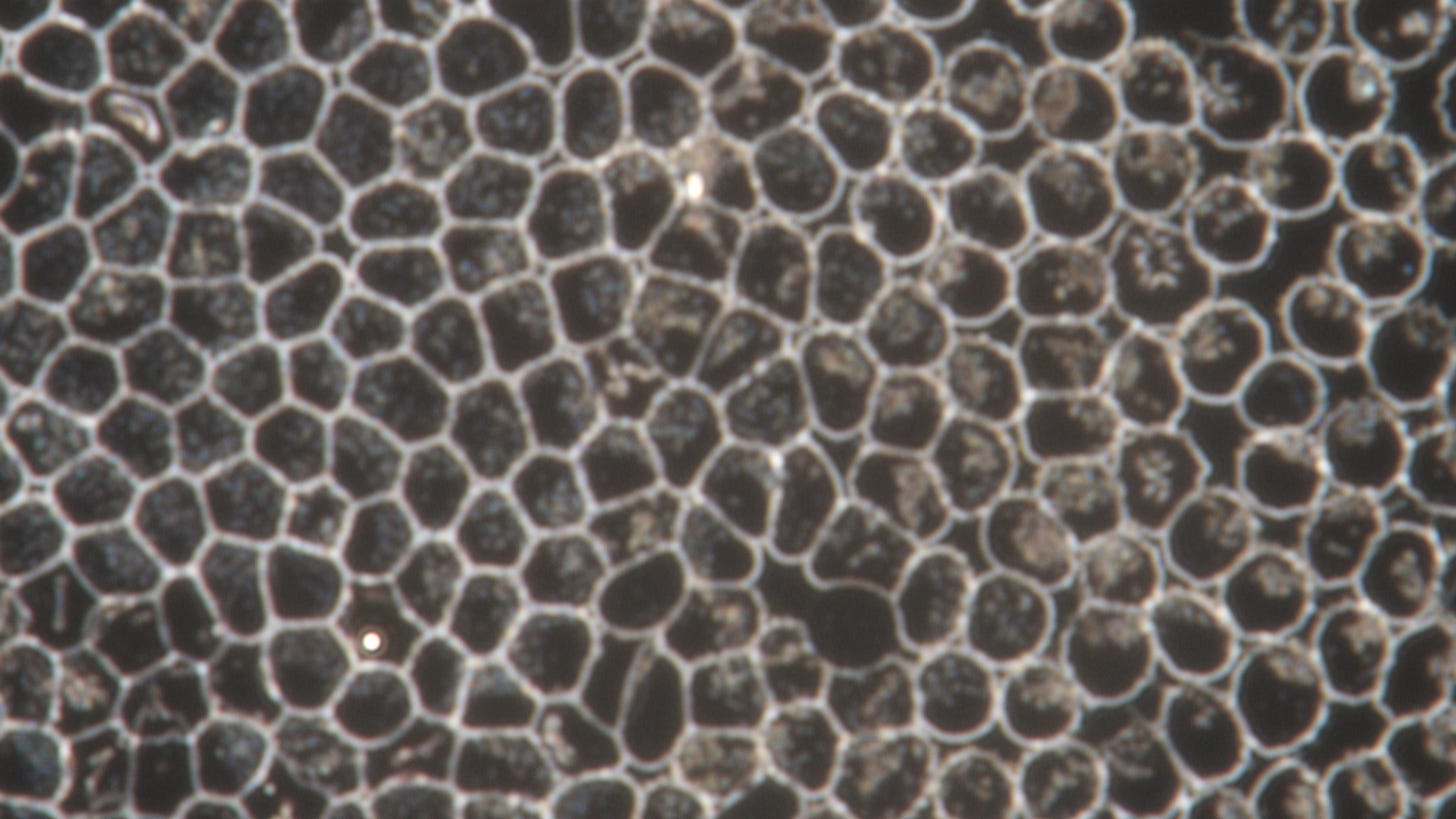

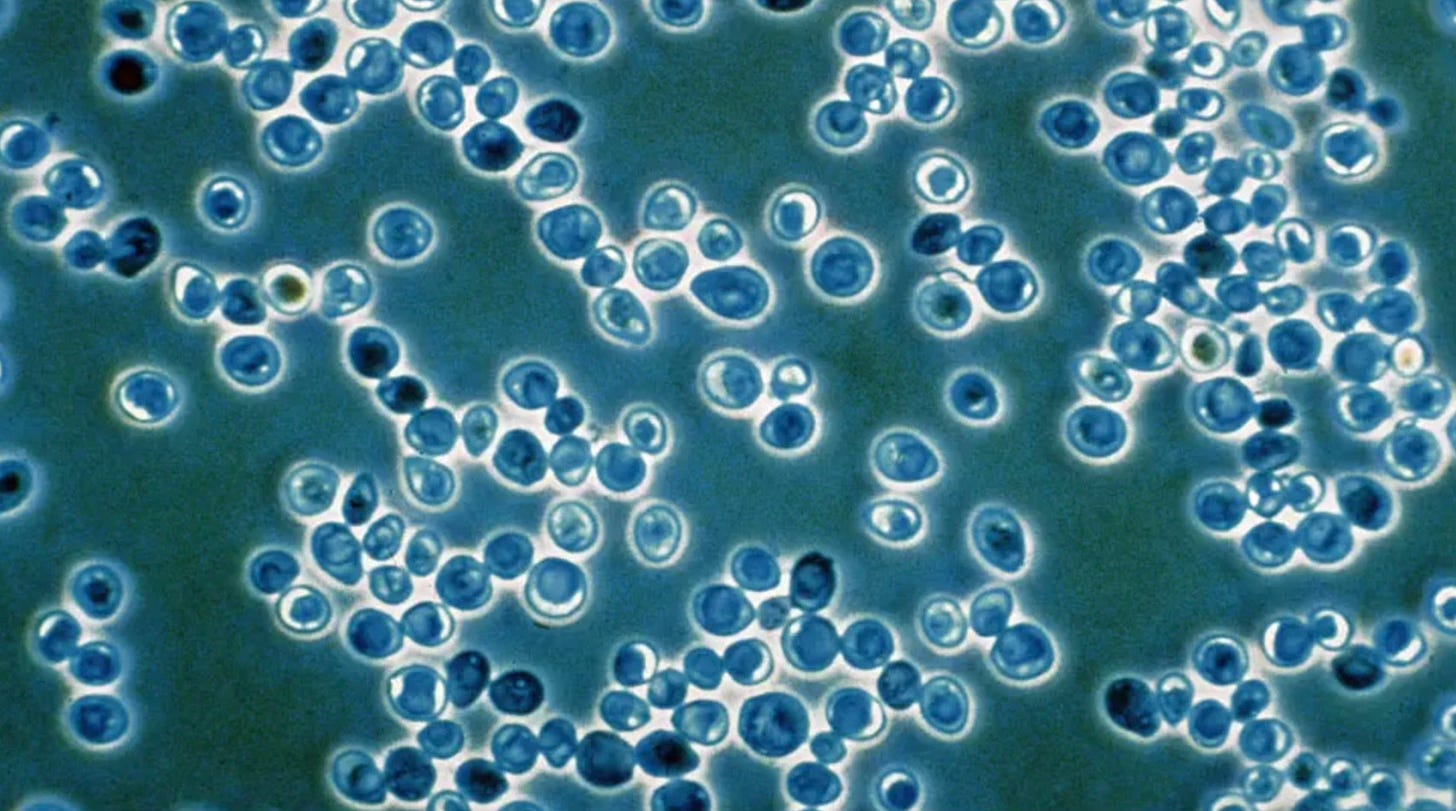
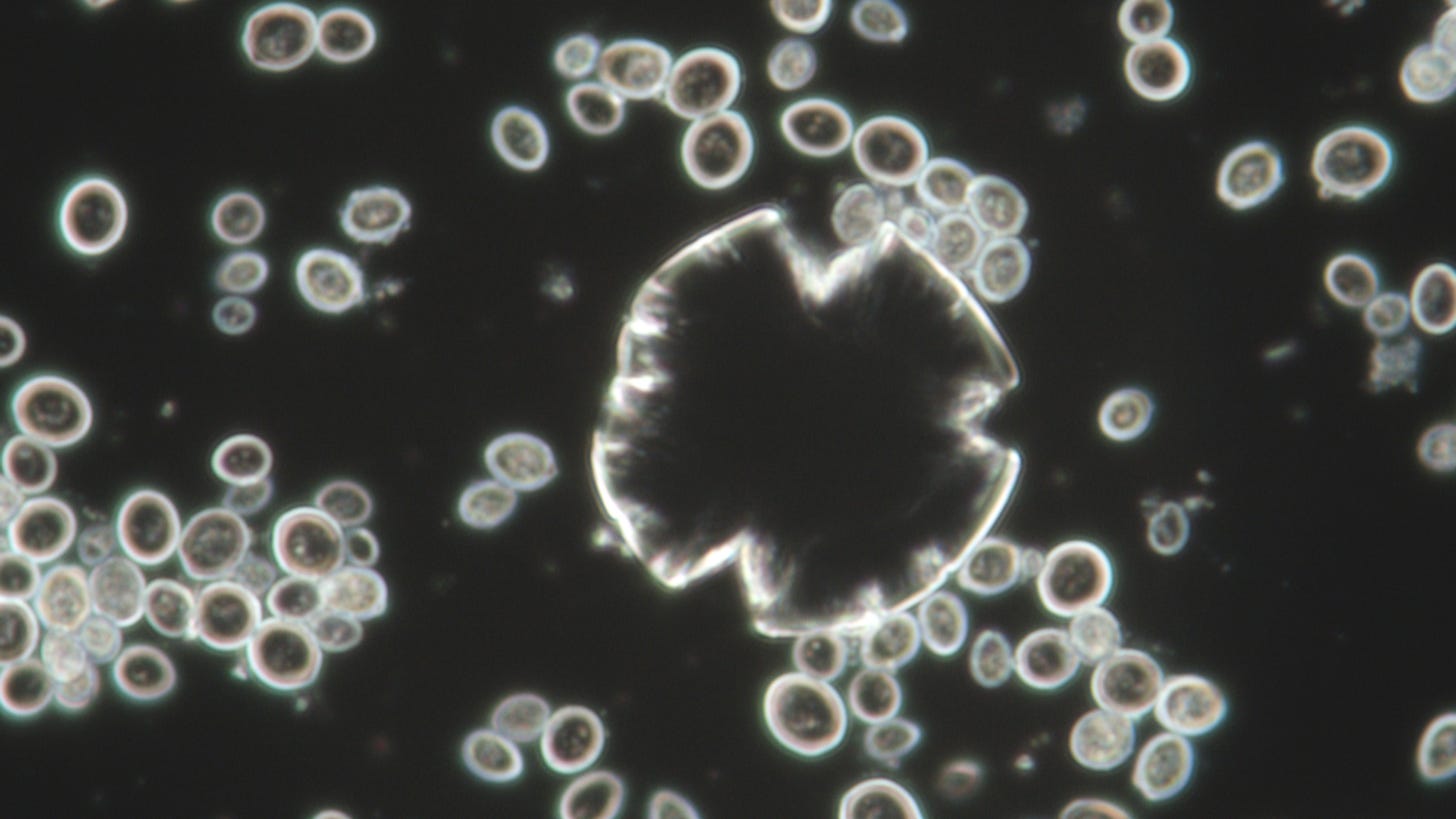
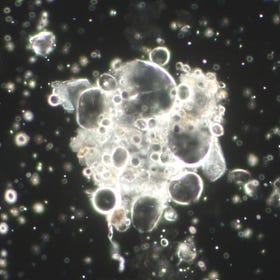
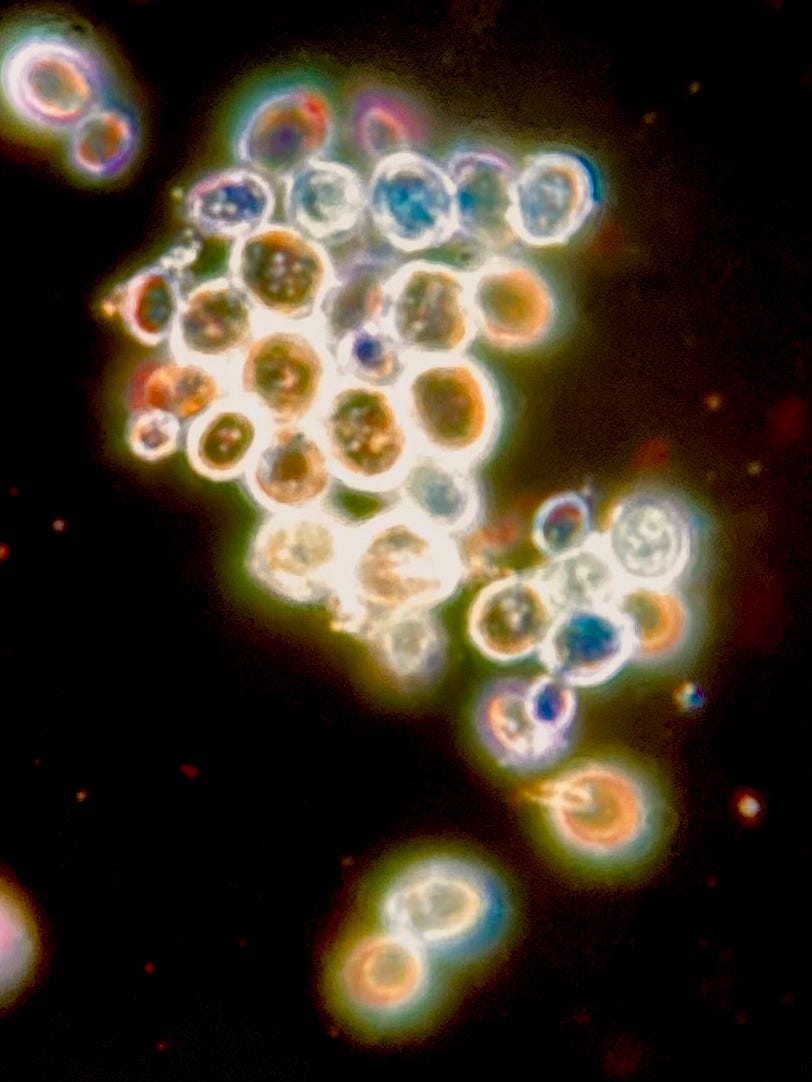
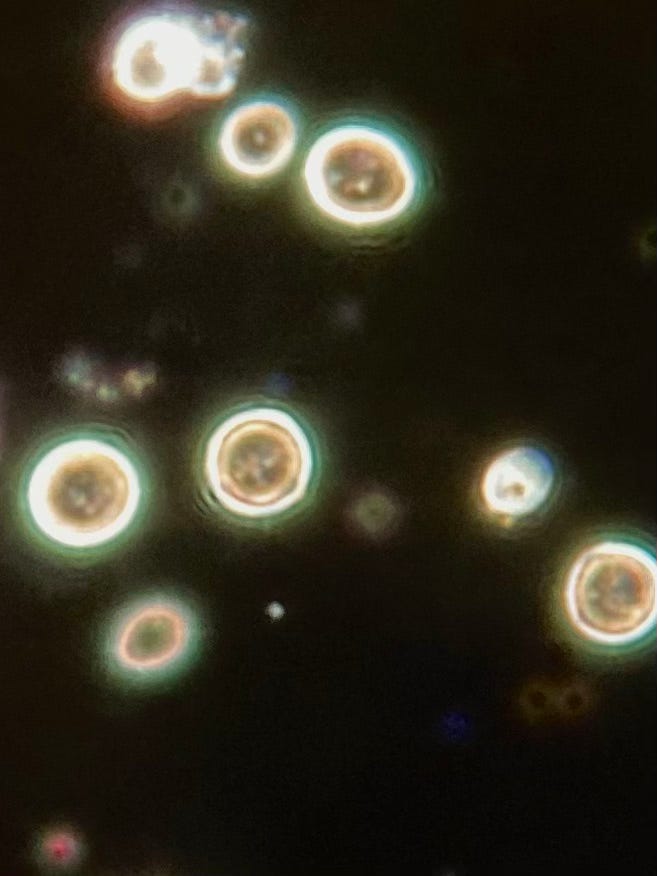

Guess what kills yeast all Candida in 90 seconds!!!! Gum Spirits of Turpentine!!! I communicated this info about yeast being used as a platform for communication between the synthetic biology and our microbiome to Dr Rima Laibow more than a year ago. She received the info responded once then never again. I also told her that it was PH sensitive and boosting alkalinity would disrupt the favorable replication environment.
Un pavé dans la mare! Bravo Silvia!